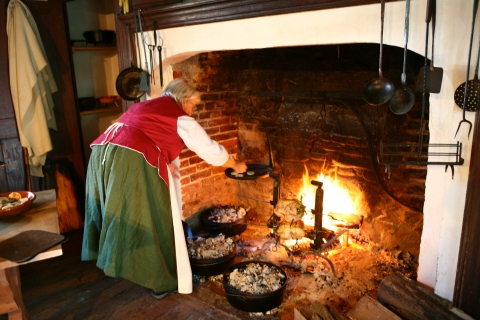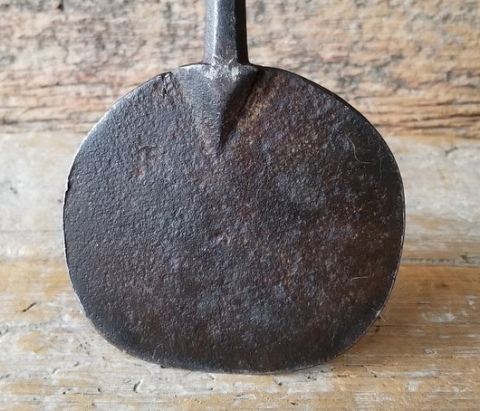Today, as many of us turn to baking and cooking as a respite from the daily news cycle, we can blend the timelessness of 18th century culinary traditions and the convenience of our modern kitchens to create mouth-watering dishes that originated hundreds of years ago. The Historic Odessa Foundation invites you to tie on your apron and try two of our most popular summertime dishes: “Gaspacha” and “Appoquinimink Cakes” from The Virginia Housewife, written by Mary Randolph and published in 1824.
This compendium of recipes she gathered from all over the Delmarva area was one of the most popular early cookbooks in America. Although the recipes are given in their original form, they are annotated for your convenience.
Gaspacha - The Virginia Housewife, Mary Randolph, 1824
- Put some soft biscuit or toasted bread in the bottom of a salad bowl
- Put in a layer of sliced tomatas with the skin taken off, and one of the sliced cucumbers, sprinkled with pepper, salt, and chopped onion
- Do this until the bowl is full, stew some tomatas quite soft, strain the juice, mix in some (dry) mustard (to taste) and oil, and pour over it
Appoquinimink Cakes - The Virginia Housewife, Mary Randolph, 1824
- Put a little salt (about a ¼ teaspoon), one beaten egg, four ounces of butter, four cups of flour—make it into a paste with new milk (cream-add enough to form a dough that does not stick to your hands)
- Beat it with a pestle for half an hour (about 10 minutes in a mixer fitted with a dough hook)
- Roll the paste thin (it will be elastic) and cut it into round cakes (use a round cookie or biscuit cutter)
- Bake them on a gridiron (an ungreased frying pan set on medium heat) and be careful not to burn them
These cakes-or-crackers are thought to be the precursor to the eastern shore beaten biscuit. You can top them off with coarse salt, poppy or sesame seeds to punch up the flavor.



